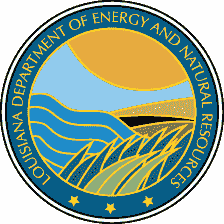Hurricanes
Angelle reports on department’s call to action since Katrina
|
State DNR Secretary Scott Angelle made available today this report on the department’s performance in accessing and evaluating impacts and damages as a consequence from Hurricane Katrina. “I have seen some of the disruption, some of the damage to our coast, but it is just still too early to gauge realistic impacts to our resources from Katrina,” Angelle said. Angelle was able to fly-over some of the impacted coastal areas struck by Katrina, several days ago, but then was called to report to the U.S. House Energy and Commerce Committee in the nation’s Capitol on September 7th. In his remarks given to the committee on Wednesday, he said, “Louisiana has proudly served America as a coastal energy producing state and wants to continue its role as a world energy leader, but we need help.” Angelle has said before in past testimony before U.S. House and Senate leaders that based on its energy producing value to the nation, acre for acre, Louisiana is the most valuable real-estate in the nation. He has also repeated the request for offshore oil and gas revenue to be shared at a 50/50 ratio for coastal producing states like Louisiana and Mississippi. Revenue sharing financial assistance from a source not subject to annual appropriations would mean billions of dollars for coastal rebuilding and restoration. Before leaving for Washington, he said there were some 2,640 producing oil and gas wells shut-in. He said that the state’s estimated loss per day in royalty income alone was close to $900,000 based on figures from the DNR Office of Mineral Resources. Secretary Angelle said that he has worked very closely with the industry, particularly with Louisiana Mid-Continent Oil and Gas Association President B. Jim Porter, (a former DNR Secretary) and with LIOGA’s (Louisiana Independent Oil and Gas Association) President Don Briggs to look at the affects of the storm on energy production. “They have been with me day in and day out at the OEP command center,” he noted. Industry and government officials worked as one under demanding circumstances to access impacts to pipelines and onshore and offshore energy facilities in the state. Briggs was especially pleased with Angelle’s rush to take action in assisting companies to access their properties. “He certainly knows how to get the attention of his colleagues and the administration, and we appreciate that,” Briggs said. DNR Commissioner of Conservation James Welsh didn’t take anytime in flexing some muscle to relax a few regulations so that oil and gas operators could move their products to market more quickly. (Link provided to Commissioner’s Memo: www.dnr.louisiana.gov/cons/KatrinaMemo09052005.pdf ) Refineries in the state were hit, some severe and some not so hard, according to Secretary Angelle and Porter. “The good news is that our refineries are up and running with the exception of three that are still dealing with some power problems, reported Porter. “I have confidence that the Secretary and I are getting closer to having these things resolved.” "The first phone call I received after the hurricane was from Secretary Angelle. He wanted our help in assessing the situation and wanted to help us get the industry up and running. One of our first priorities was getting electrical power restored to the LOOP facility so that crude oil could be pumped to the refineries. Refineries in the path of Katrina had been shut down and evacuated. Some companies were able to restart but needed crude oil could have been severely interrupted. Secretary Angelle made this a top priority. I have no doubt this quick action prevented the disruption in gasoline supplies for our area and to some extent the rest of the country.” Producers in the central and eastern Gulf of Mexico are currently assessing damage to their production facilities, according to Briggs. “The reports on our coastal facilities have been mixed, some have been heavily damaged and others with minimal damage.” Briggs also commented, “Our offshore support infrastructure at Venice and the mouth of the Mississippi has been heavily damaged. Port Fouchon is recovering quickly under the direction of port director, Ted Falgout and should be 75% to 90% operational by the end of next week.” Coastal specialists at DNR were able to visit some of the existing CWPPRA or Breaux Act projects and found seven of them to be undamaged at this time. Because fly-over trips of the coastal zone were nearly impossible before now, the Office of Coastal Restoration and Management has planned a schedule of flights beginning today. Gerry Duszynski, Acting Asst. Secretary for the Office of Coastal Restoration and Management, said that several ground and boat trips to coastal projects sites will also commence September 12th. Beside 24/7 work by the agency’s emergency preparedness officers at the OEP operations center, Angelle said many of his employees had been tasked to work with the state departments of Social Services, Transportation and Development, Environmental Quality, State Police and the Coast Guard to provide immediate services for rescue and for emergency safety measures. Angelle said that some 200-plus volunteers from the department were working at various locations, including the LSU Fieldhouse in Baton Rouge, the Heyman Center in Lafayette, and at Nichols State University in Thibodaux, where shelters have been operating since the storm. Other assignments of the department have included getting needed medical supplies by boats to relief workers as well as working on emergency waivers for some coastal use permits to allow for restoration of energy infrastructure in the state. Angelle said today that he is working on a personal letter to oil and gas industry professionals to remind them that Katrina’s negative impacts will not dampen the rebounding and recovery efforts that the agency and government has firmly pledged in the months and years ahead. |
|
Editors: For more information, contact the DNR Public Information Office at 225-342-8955. |
